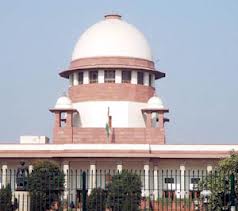 New Delhi, Jan 24: In a relief to air passengers, the Supreme Court on Wednesday barred all airlines from charging transaction fees from flyers.
New Delhi, Jan 24: In a relief to air passengers, the Supreme Court on Wednesday barred all airlines from charging transaction fees from flyers.
A bench of justices D K Jain and Madan B Lokur also pulled up the Director General of Civil Aviation (DGCA) for failing to ensure that the passengers were not burdened with such charges.
Air passengers are made to pay transaction fees varying between three to six per cent of the total fare by travel agents for booking flights.
The bench also expressed displeasure over the DGCA failing to enforce its December 17 circular, restraining the airlines from levying transaction fees. The court said its restraint order will be in operation until the appellate authority takes a call on the matter, since the Federation of Indian Airlines had challenged the validity of the circular before the secretary of the Civil Aviation Ministry.
Representing FIA, senior counsel U U Lalit submitted that the airlines had approached the Delhi High Court on Tuesday, which had told them to approach the appellate authority, besides directing that no coercive action will be taken against them by the DGCA.
The apex court brushed aside the plea saying that there was no stay on the circular.
“But it does not mean that you can continue charging. There is no stay of the circular. We are of the view that the December 17 circular is still in force. Hence, transaction fee cannot be charged as a part of the total fare. You can not start charging it again under a different nomenclature,” the court said.
During the hearing, the bench also directed the DGCA to examine the tariff structure and how the base fare was being charged even though a ticket was booked seven days in advance.
“There are several bands for fixing the base price which in certain cases range from Rs 1,120 to Rs 36,000. We are of prima facie view that regarding wide range of basic fair, it will be necessary for the DGCA to examine the tariff structure of the airlines,” the bench said.
It also noted that there were no criteria with regard to fare bands and no transparency on availability of seats.





Comments
Add new comment